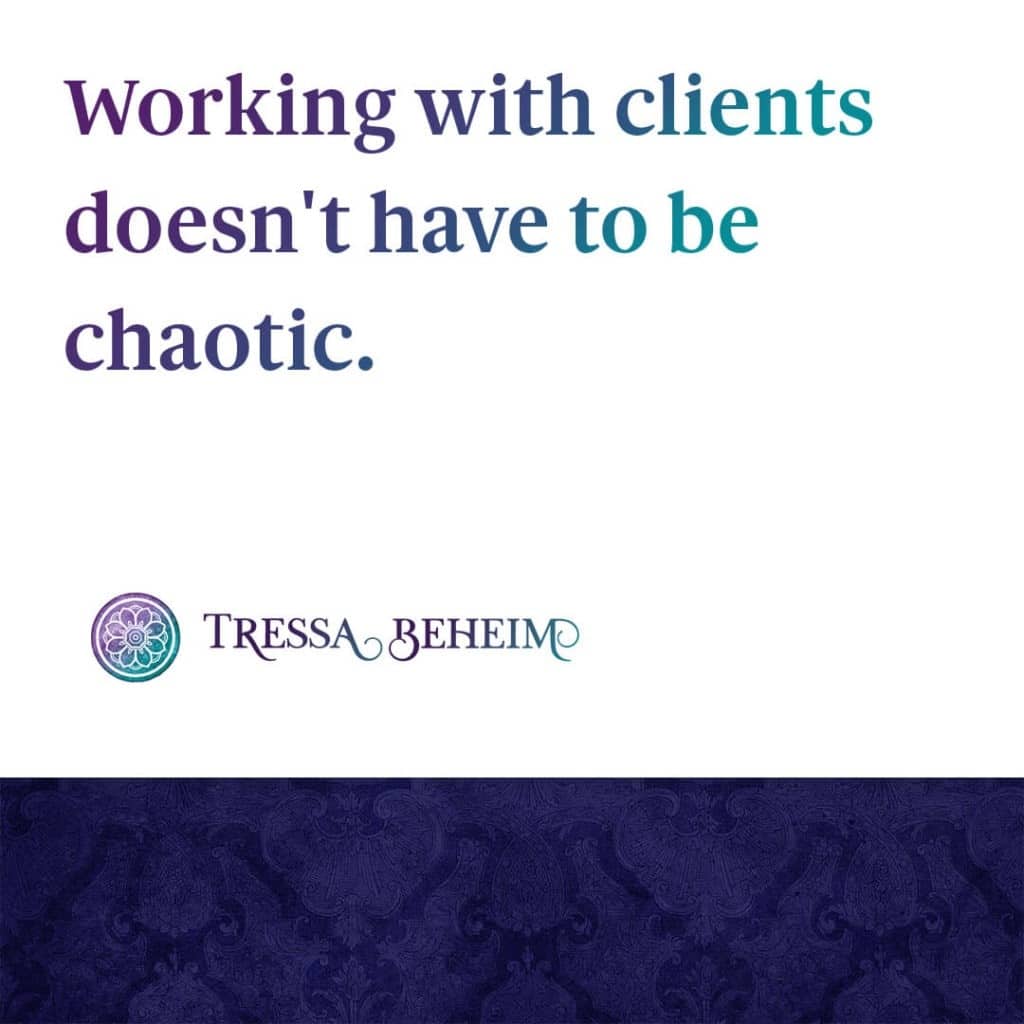When you work with clients, getting organized is a must! There’s generally a lot of moving pieces involved with delivering a service, and it’s easy to get overwhelmed if you’re not careful.
Establishing some starter systems to ensure key parts of the process are streamlined will help you get more done in an efficient manner.
These starter systems also focus on the vital components of working with clients that tend to break down and cost you money, so they’ll also help you grow your bottom line!
Build a Starter System for Your Lead Follow-ups
A common question I get time and again is: “How do systems make me money?”.
While not all systems can be directly tied to increased revenue, establishing an effective lead follow-up system is one that can definitely help you grow your income.
As a busy business owner, consistently following up with leads easily falls to the wayside. How you pursue leads, though, is directly related to your revenue. It’s only logical that if you have a starter system that ensures regular follow up with leads, you’ll convert more prospects into clients.
Now, this doesn’t mean you have to harass people to say yes or ignore them when they say no. You get to establish a system that honors your preferences for marketing and selling so get to decide how many times, how frequently, and when you stop following up.
This starter system has five basic steps:
- Decide on your immediate follow-up process.
- Create a tracking method to use.
- Calendar when you’ll follow up with leads each week.
- Establish an ongoing schedule.
- Draft follow-up templates.
For more details on how to create this system for your business, check out this post.
Build a Starter System for Onboarding New Clients
We all love to hear “Yes!” but, let’s face it, there’s nothing worse than scrambling to set up a new client who has committed to start working with you.
Rather than struggling to remember each action you need to take with a new client or repeatedly putting out fires when you forget something, take some time to create a simple system to make sure every client is easily set up the right way from the outset.
Here are five simple steps you can take today to start building your client onboarding system.
- Document and prepare the essential items that need to be sent as soon as you get a “yes.” (Think proposal, contract, invoice, etc.)
- Document and prepare the essential items that need to be sent as soon as the payment and contract are complete. (Think intake forms, welcome packets, scheduling links or other necessary items to get your client prepared for the first step of working with you.)
- Identify what emails you regularly send, and create templates for them.
- Build your internal client setup so you’re ready to go once you get started. (Think Dropbox folders, Google Drive folders, project management setup, time tracking setup, etc.)
- Decide where to file your signed contract.
For more details on building your own onboarding starter system, check out this post.
Build a Starter System for Invoicing
Ensuring that you’re properly tracking your time, following proper billing practices, and dealing with scope creep is a great way to plug common money leaks when working with clients. It’s so easy to not bill when something is out of scope — especially if you don’t have an easy way to verify what the original engagement was! Also, if your invoicing is so complicated that it takes hours to do, it’s easy to put it off when you’re overwhelmed with work.
When it comes to invoicing, take some time to create a simple resource that makes it easy to bill clients. This is particularly important if you charge by the hour and have clients at different price points. This can be as easy as a spreadsheet that documents the rate each client is at and any packages they already paid for.
Find an uncomplicated time tracking tool for you and your team to use so you can be sure you aren’t over delivering without realizing it. Toggl is a great free tool that’s easy to use and set up. It does, however, have a limit of only five team members for their free version, so if you have a larger team, consider Clockify as another free alternative.
Establish regular intervals to check in on projects or retainers to ensure clients are not going out of scope unknowingly. There’s nothing worse than realizing at the end of the month that your client has gone way over on hours — and you didn’t let them know in advance!
This can be as simple as initiating a routine to check in consistently on where clients are at with their current projects or retainers. For example, on Mondays, one of my team members updates our retainer spreadsheet that compiles all the hours from various subcontractors. He then looks at where clients are at in relation to their package and gives me a heads up if someone is not where they should be. I’m then able to react appropriately right away so there are no surprises at the end of the month when the client has a lot of extra hours.
These simple starter systems will help you serve your clients with more grace and ease and ensure that you aren’t leaving money on the table! With a bit of preparation and planning, you can make sure you provide excellent service to your clients — without any chaos or stress on your part.



